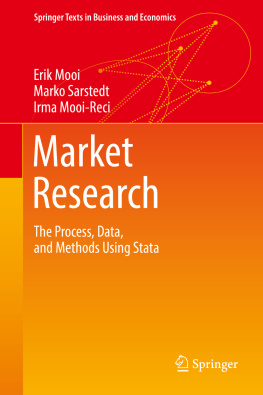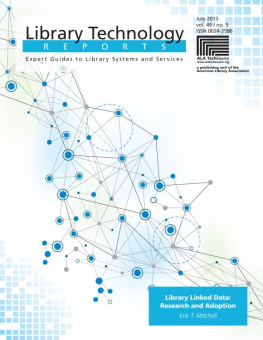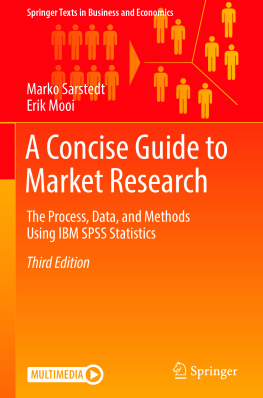1. Introduction to Market Research
Learning Objectives
After reading this chapter, you should understand:
What market and marketing research are and how they differ.
How practitioner and academic market(ing) research differ.
When market research should be conducted.
Who provides market research and the importance of the market research industry.
1.1 Introduction
When Toyota developed the Priusa highly fuel-efficient car using a hybrid petrol/electric engineit took a gamble on a grand scale. Honda and General Motors previous attempts to develop frugal (electric) cars had not worked well. Just like Honda and General Motors, Toyota had also been working on developing a frugal car, but focused on a system integrating a petrol and electric engine. These development efforts led Toyota to start a project called Global Twenty-first Century aimed at developing a car with a fuel economy that was at least 50% better than similar-sized cars. This project nearly came to a halt in 1995 when Toyota encountered substantial technological problems. The company solved these problems, using nearly a thousand engineers, and launched the car, called the Prius, in Japan in 1997. Internal Toyota predictions suggested that the car was either going to be an instant hit, or that the products acceptance would be slow, as it takes time to teach dealers and consumers about the technology. In 1999, Toyota decided to start working on launching the Prius in the US. Initial market research showed that it was going to be a difficult task. Some consumers thought it was too small for the US and some thought the positioning of the controls was poor for US drivers. There were other issues too, such as the design, which many thought was too strongly geared towards Japanese drivers.
While preparing for the launch, Toyota conducted further market research, which could, however, not reveal who the potential car buyers would be. Initially, Toyota thought the car might be tempting for people concerned with the environment, but market research dispelled this belief. Environmentalists dislike technology in general and money is a big issue for this group. A technologically complex and expensive car such as the Prius was therefore unlikely to appeal to them. Additional market research did little to identify any other good market segment. Despite the lack of conclusive findings, Toyota decided to sell the car anyway and to await the publics reaction. Before the launch, Toyota put a market research system in place to track the initial sales and identify where customers bought the car. After the formal launch in 2000, this system quickly found that celebrities were buying the car to demonstrate their concern for the environment. Somewhat later, Toyota noticed substantially increased sales figures when ordinary consumers became aware of the cars appeal to celebrities. It appeared that consumers were willing to purchase cars that celebrities endorse.
CNW Market Research, a market research company specializing in the automotive industry, attributed part of the Priuss success to its unique design, which clearly demonstrated that Prius owners were driving a different car. After substantial increases in the petrol price, and changes to the car (based on extensive market research) to increase its appeal, Toyotas total Prius sales reached about four million and the company is now the market leader in hybrid petrol/electric cars.
This example shows that while market research occasionally helps, sometimes it contributes little, or even fails. There are many reasons for market researchs success varying. These reasons include the budget available for research, the support for market research in the organization, the implementation, and the market researchers research skills. In this book, we will guide you step by step through the practicalities of the basic market research process. These discussions, explanations, facts, and methods will help you carry out successful market research.
1.2 What Is Market and Marketing Research?
Market research can mean several things. It can be the process by which we gain insight into how markets work. Market research is also a function in an organization, or it can refer to the outcomes of research, such as a database of customer purchases, or a report that offers recommendations. In this book, we focus on the market research process, starting by identifying and formulating the problem, continuing by determining the research design, determining the sample and method of data collection, collecting the data, analyzing the data, interpreting, discussing, and presenting the findings, and ending with the follow-up.
Some people consider marketing research and market research to be synonymous, whereas others regard these as different concepts. The American Marketing Association (AMA) , the largest marketing association in North America, defines marketing research as follows:
The function that links the consumer, customer, and public to the marketer through information information used to identify and define marketing opportunities and problems; generate, refine, and evaluate marketing actions; monitor marketing performance; and improve understanding of marketing as a process. Marketing research specifies the information required to address these issues, designs the method for collecting information, manages and implements the data collection process, analyzes the results, and communicates the findings and their implications (American Marketing Association 2004).
On the other hand, ESOMAR , the world organization for market, consumer and societal research, defines market research as:
The systematic gathering and interpretation of information about individuals and organisations. It uses the statistical and analytical methods and techniques of the applied social, behavioural and data sciences to generate insights and support decision-making by providers of goods and services, governments, non-profit organisations and the general public. (ICC/ESOMAR international code on market, opinion, and social research and data analytics 2016).
Both definitions overlap substantially, but the AMA definition focuses on marketing research as a function (e.g., a department in an organization), whereas the ESOMAR definition focuses on the process. In this book, we focus on the process and, thus, on market research.
1.3 Market Research by Practitioners and Academics
Practitioners and academics are both involved in marketing and market research. Academic and practitioner views of market(ing) research differ in many ways, but also have many communalities.
There is, however, a key difference is their target groups. Academics almost exclusively undertake research with the goal of publishing in academic journals. Highly esteemed journals include the Journal of Marketing , J ournal of Marketing Research , Journal of the Academy of Marketing Science , and the International Journal of Research in Marketing . On the other hand, practitioners target group is the client, whose needs and standards include relevance, practicality, generalizability, and timeliness of insights. Journals, on the other hand, frequently emphasize methodological rigor and consistency. Academic journals are often difficult to read and understand, while practitioner reports should be easy to read.













